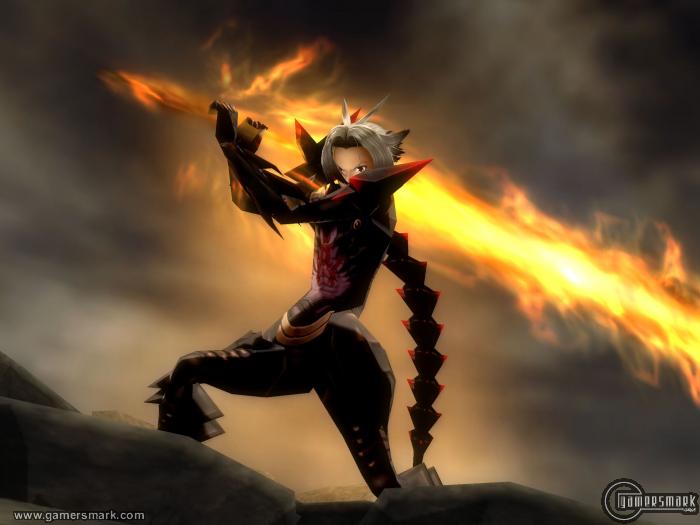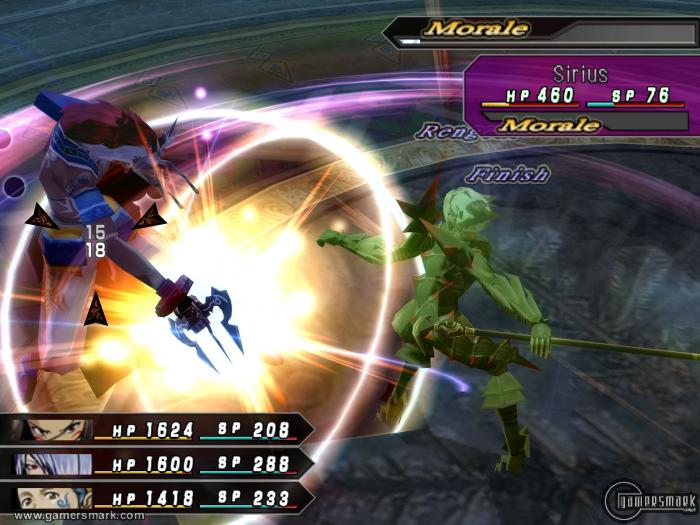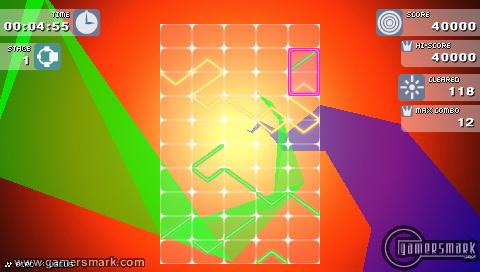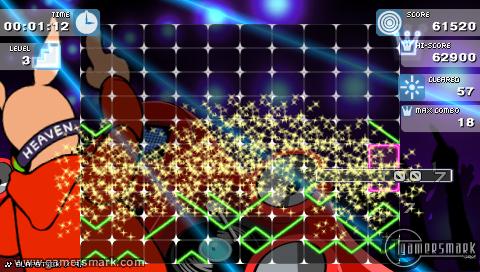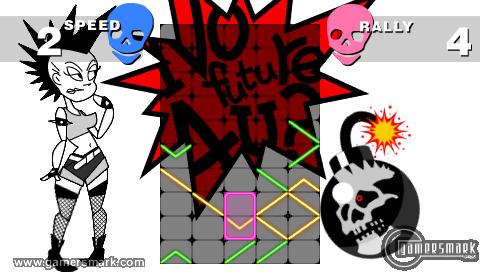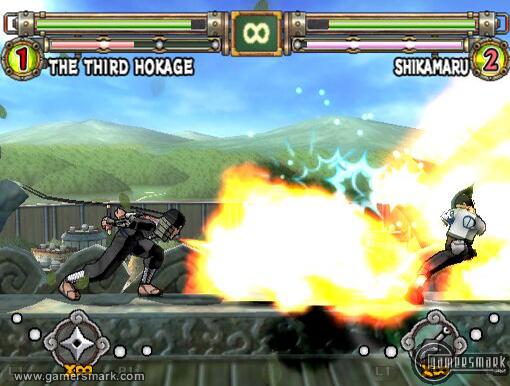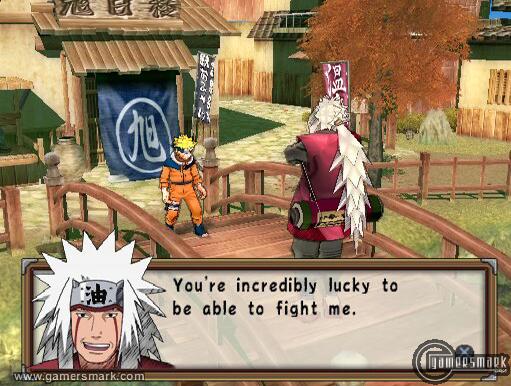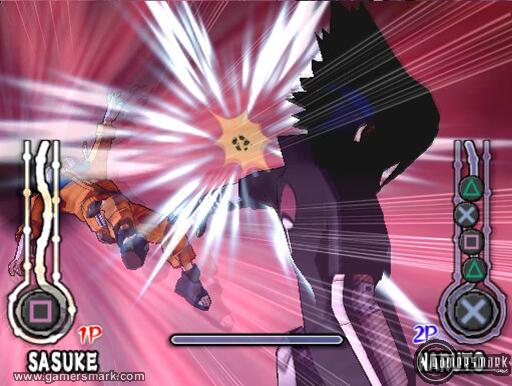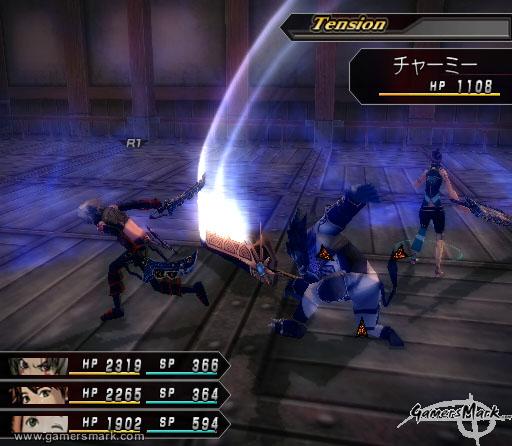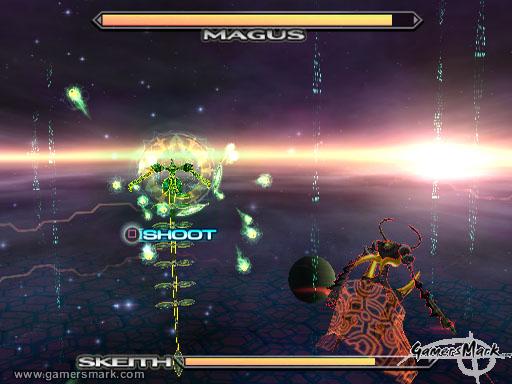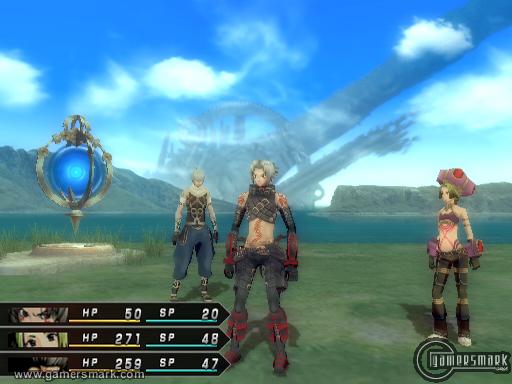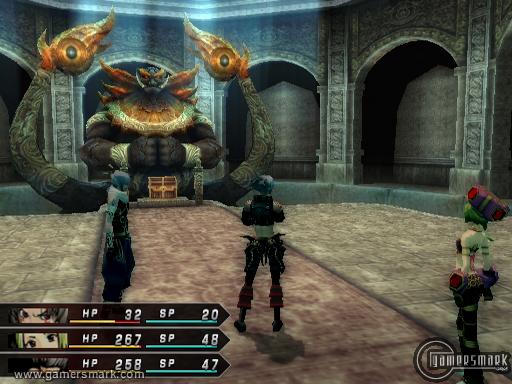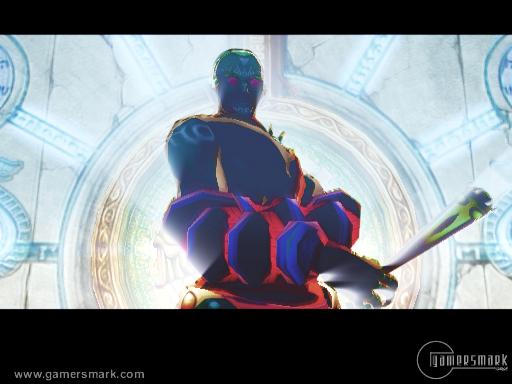Developer: CyberConnect2 Corp. / Publisher: Namco Bandai Games || Overall: 9.0/10
The .hack franchise is back for more, and does it ever impress! Namco Bandai Games’ CyberConnect 2 has breathed new life into the faux-MMORPG series with .hack//G.U. Vol.1//Rebirth. More than simply being “reborn,” .hack//G.U. takes all the strengths of the experiences of .hack//Infection, Mutation, Outbreak, and Quarantine; it expands on their concept and rolls it all into a package that is one of the best RPG experiences I’ve had in a long time. The almost masterful retooling has reminded me what made the original .hack games so appealing.
As with the previous .hack games, you play a game within a game. Called “The World,” it is an MMORPG played by people in the relatively near future of 2015 when online gaming and the Internet rule everyday lives. As always, there is controversy awry about The World and its impact on its youth. Taking place seven years after the events of the originals, this time around the story follows a The World legend known as Haseo, The Terror of Death, known for killing player killers. Haseo is distraught by the loss of someone he grew very close to to the mysterious player known as Tri-Edge. Tri-Edge has the appearance of Kite from the first four games, but something is obviously not kosher with the way the character looks or acts. Is Tri-Edge a player or a computer program? “Who is Tri-Edge?” is a revolving theme in the first volume of .hack//G.U. The story is presented in more of a traditional mystery with less “weirdness” than what was seen in the previous four. Less symbolism and underlying meanings are required to be understood, and because of all this, the story progresses at a nice pace that is more similar to how an anime might play out rather than a game that has all the time in the world to explain things, especially with two sequels coming up right after it.
As you progress, new gameplay elements are slowly introduced at a somewhat consistent pace. There is quite a bit to learn about The World, and the way the game introduces it all is satisfactory. The Operating System, Altimit, is back again, and is a lot slicker than what was presented in the originals. Some news announcements about things happening in the real world have short newsreels lasting about fifteen seconds. There is also a humorous news magazine called Online Jack, where he investigates a sickness called Doll Syndrome, that seems to stem from playing The World. Though there isn’t that big of a bonus from loading saved data from any of the previous games (all you get is an email from BlackRose), its only worth it to know the gist of what happened before G.U. and the references you can catch. The World from the original games is referenced to as The World R:1, with the The World in G.U. being called The World R:2. The gameplay and story are different enough that I could see there being little problem with going back and playing the previous games after diving into G.U.
.hack//G.U.’s main improvement has been with the battle system that desperately needed to be revamped after playing through four full games. With no improvement at all to be seen between each of the previous games, there was a lot of time to pick out what needed to be improved and what annoyances had to be removed. Nearly all the complaints I had with the previous games in the series have vanished. And while I have not personally beaten all four of the originals at the time of writing, (I’m in the final hours of the third part) I can easily say that if you liked them, you will love G.U.
The battle system has become much more action-oriented. No longer do you have to run right up to an enemy and be right next to them to use your weapon. The battle system allows for you to strike at an enemy even if they’re not in your range. Though in writing it may seem like it’s sort of a dumb thing to mention, in actual gameplay, it expands the amount of “freedom” one has during a battle, by not being restricted in their attacks. Though only the X button is used for every single attack, you can hold it down for a charge attack, or tap it repeatedly at the right time to inflict extra damage. Even though it would have been nice to toss in a second button for a different kind of attack, for instance a light or heavy attack, to increase the versatility of the battle system (as well as having more complex combos), it’s really the only thing to complain about when it comes down to it. The Circle button is used as defense, and the Square button is used for activating a special attack, which will be described later on. That is the battle system in a nutshell – but what makes it fun is how fast-paced it is and how hectic a battle can become, especially in the later stages of the game.
Battles are fought on the screen, just like before, but what is different in G.U. is that it treats battles in a little more traditional way; battle mode is started, and at the end, a dialog box displaying experience/items earned. When a battle is initiated, a circular boundary is created that you cannot escape from without using an item called a Smoke Screen. This forces you to stay within the confines that are created and not easily run away from enemies, which could be used to your advantage previously. The camera is a lot smarter this time around, and doesn’t rely so heavily on user input when in battle, as it will draw back away from your characters from the regular third person angle and take a more disconnected look at the battle playing out. By doing this, the action is easier to see unfold, not to mention easier to control your character since you don’t have to fidget around with the camera all the time.
Another big difference that is noticeable is the lack of on-the-fly party commands. In the previous installments, you were able to press the Square button and tell your party members to do something specific outside of their normal assigned strategy, such as healing or using magic. In G.U., your party members are much more independent, but are smarter in the sense that they will heal themselves (and you) when they need to within the constructs of one of the strategies you tell them to execute when in battle. Less control over your party members can be seen as a good and bad thing, as you can focus more on what your character is doing in the battle, but have less impact on the overall execution of it. The lock-on system is very effective, with little to no foul-ups. The only times the lock-on system can be faulty is when you’re facing against multiple flying enemies, but perhaps that’s just the difficulty of that particular enemy rather than a fault with the locking on.
A Morale Gauge is represented in the upper right hand corner of the screen during a battle. When you perform combos with regular attacks, or a critical combo called a “Ren Geki,” your party members will notice your effort and slightly fill up the gauge, the most being earned after a Ren Geki. Once the Morale Gauge is filled up, it will tell you to press the Square button. Pressing the Square button when the Morale Gauge is filled up all the way will activate an “Awakening.” Depending on the type of Awakening you’ve selected from the menu screens, you can either cast a magic spell with your party members that deplete absolutely no Skill Points or go into a “berserk” mode that increases your speed and strength tremendously as you beat the crap out of your enemies. Ren Gekis also add on a small amount of experience points on top of what is already earned from the battle, so while it is good to still do a Ren Geki whenever you can, if you do a Ren Geki that ends the battle, the Morale Gauge will not fill up, due to the couple of seconds it takes for the gauge to initiate its “filling up” after one is done. That amount of time is longer than what it takes for the battle to end after defeating the last enemy, which is very unfortunate.
Abilities and magic are also vastly different in their implementation. Instead of being reliant on what armaments you have equipped, magic will rely on simply buying a very expensive item that teaches you the ability. As money is hard to come by in G.U., you’ll have to spend your money wisely and consider which magic you really need or want, as well as which ones your party members should have as well. Arts, which are weapon-specific abilities, rely on the experience you have with a particular weapon. The more weapon levels you gain using a type of weapon, you’ll get more Arts. The big disadvantage is that Arts are not learned very often, and can only be attained through battle. In the beginning stages of the game, you’ll have only one Arts until about ten hours or so in the game – which is much too long. It would have been nice if they tossed in an Arts when you reached weapon level 2, but the game pulls no punches in that department. Every time you use a skill or magic ability, you will deplete a certain amount of SP (or Skill Points).
You don’t only fight game-created monsters this time around. With the new version of The World, named The World R:2, a gameplay system for Player Killing (or PK) has been added. Player-on-player battles occur now in The World, and practically everyone is fair game. When exploring areas, you will sometimes see a Battle Area that has a battle in progress inside. By choosing to enter the Battle Area, you can help whoever is being attacked. While you cannot initiate any PKing yourself, the addition of being able to fight other players is a nice change-up every once in a while. The concept is expanded with the player vs. player Arena battling, where much of the story in the first volume of G.U. takes place and revolves around.
It still takes 1000 exp to increase your level. Experience gained from defeating the same-leveled monsters goes down as your level increases. This keeps the player motivated to go to new places to increase their levels and acquire better items to help along the way. Since Haseo is an Adept Rogue, he is able to use multiple classes of weapons. The Twin Swords and Broad Sword are the two weapons that will be mainstay of the first volume. Unfortunately, you can’t easily switch weapons in battle; you must go to the menu and equip the weapon you want and wait for Haseo to put away and take out the weapons again. The battle system is less versatile and fun than it could have been if there was a way to easily change weapons.
A little while into the game, Avatar Battles will be introduced. Avatar Battles are basically Zone of the Enders-esque mini games, just not as fleshed out. Though the Avatar Battles have surprisingly responsive controls for being what they are, they aren’t as good as their obvious inspiration. These Avatar Battles are a nice change-up in the pace of the gameplay, but can ultimately be frustrating, especially during hard boss fights. This is really no surprise, as I have already experienced all of that with both Zone of the Enders games, and didn’t quite expect it to be integrated in an action RPG.
As a whole, equipment is much easier to understand now. Equipment are assigned levels, and once your character achieves or surpasses the level of the equipment, you are able to equip them. It’s much more simpler to understand, as levels now have some sort of meaning attached to them other than being a superficial number that told you how good the armor was, like in the originals. Since equipment do not have any abilities or magic assigned to them either, you need only to make a decision about what to have on by the stats they change. Different classes of armor also make it easier to know which classes can equip what, as before, a piece of armor would just say who couldn’t equip something. As a result, there are “barebones” equipment that will change their name when you customize them with a customization item. The customization item will change the equipment’s properties, and have it consistent to what you actually want out of a piece of equipment.
While the inclusion of guilds makes the story a little bit more interesting, you can’t add anyone to your guild unless the story allows for it. The main purpose of the guild is for storing and selling items. When your guild expands, its uses will expand as well. One such use is something called Alchemy. Alchemy allows you to enhance a weapon by combining one or more of the same exact weapon up to five times. Once the weapon hits an Alchemy combination of +5, it may be used in Alechmizing any other weapon in the class up to 10 levels difference. This allow you to use extra weapons to enhance your existing weaponry, until your level is high enough to equip the next best weapon you may have acquired that can’t be equipped due to your current level. Each weapon is also noticeably different.
The exploration of areas has also been slightly improved. Treasure chests are a lot easier to open, since Haseo just kicks anything open. There is now only on camera view, and you can’t pull back or zoom in like you were able to before. This decrease in the amount of camera control can prove to be a little annoying when you chase down Lucky Animals, because they may be fast enough to run outside of your camera’s view. Lucky Animals are basically little animals that will give your characters bonuses if caught. Haseo is a fast runner, so you can get to Point A and Point B relatively quickly. You also get a Steam Bike that allows you to go “faster.” I put faster in quotes because the bike sucks – it doesn’t go fast at all. I avoid it like the plague, quite frankly.
The area word system is much simpler to use. There aren’t any complex readings you have to make with what is being displayed by flashing lights – its all given to you in plain English, with a helpful description at the bottom of the screen to make you even more informed as to what kind of area you’re going into. There are three types of dungeons you will encounter: The Japanese house, cave, and grassy island field. The selection of different areas is nice, and it’s not as dreary as being inside of an actual dungeon all the time, which is where most of the gameplay was in the originals. At the end of the dungeon, there will be a Beast Statue and a treasure chest with a rare item in it. There is also an assortment of unique areas called “Lost Ground” where story takes place. Different quests and jobs are available every once in a while which gives you opportunity to increase your level in between parts of the story.
The graphics and sound are some of the best parts about .hack//G.U. The frame rate is very consistent, at about thirty frames per second. The only time the frame rate drops is when a lot of things happen on the screen at the same time. Cutscenes virtually never have any slow-down. The graphics themselves are very nice, and capture an anime feel, especially in the cutscenes, which are very stylistic in nature. The character designs are also very stylistic and look like they’re straight out of an anime, as well. Voice acting is also top notch. The main character, Haseo, has a very believable voice and an excellent voice actor behind him. Most of the characters in the game have very good voice actors, which really isn’t a surprise considering the first four games had the same quality of voice actors, with only a couple of annoying ones. Loading is also another positive. Loading is virtually non-existant – in one word, its perfect. Unless you were actually looking to see signs of where the game starts loading something, you will not notice it at all, since the developers devised a way of making the game seamless from one end to the next with no huge pauses like you would see in a normal Playstation 2 game. A commendable job goes to the developers for achieving this feat.
.hack//G.U. Vol. 1: Rebirth is a very enjoyable game. If you like the original games, you’ll have a blast with .hack//G.U., just like I did. Unlike the first four, gameplay does not pull down the game, rather supports it very well with a nice foundation. With three games planned for the .hack//G.U. series, I hope that we can expect general improvements to the already solid formula put in place by Vol. 1: Rebirth. The first volume of G.U. is also quite a bit longer than a single part of the originals. If the next two games show little to no difference, it might prove to be another bad decision in the progression of .hack games in general.

